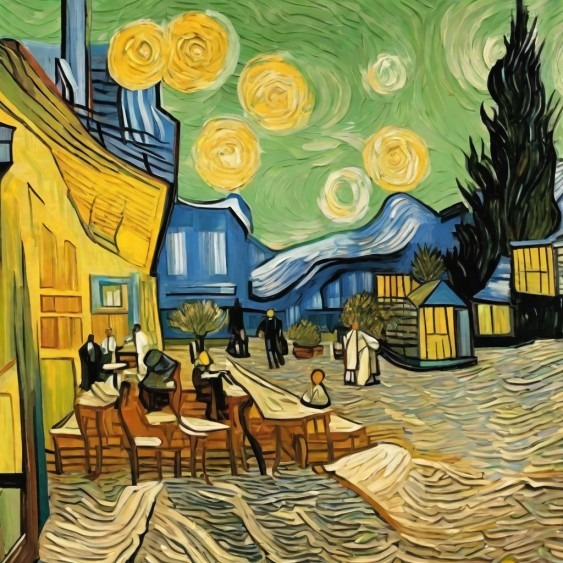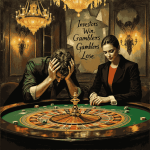
The Prudent Investor: Focusing on Trends, Not Speculation, for Steady Gains
Oct 15, 2024
Intro: Lessons from History, Psychology, and Market Trends
In finance, few virtues are as vital as patience. From the dawn of civilization to the present, great minds—philosophers, mathematicians, and investors—have echoed this truth. The prudent investor knows that the key to market success lies in skill or timing and in mastering the psychological and technical undercurrents that shape human behaviour.
Warren Buffett, the sage of Omaha, reminds us to “be fearful when others are greedy and greedy when others are fearful.” But this wisdom didn’t originate with Buffett. As we journey through the centuries, we uncover an ancient lineage of thought, from Babylonian merchants to modern-day market strategists, all pointing to one timeless principle: the value of prudent patience.
The Foundations of Market Patience: Lessons from the Past
Dating back to 2000 BC, Hammurabi’s Code laid out the first written guidelines for trade, emphasizing fairness and caution. While rudimentary, this marked an early recognition that successful trading required more than mere skill—it demanded restraint, foresight, and an understanding of market psychology. Fast forward to the Greek philosopher Bias of Priene, who once said, “Most men are wicked.” This cynical wisdom suggests that mass behaviour is driven by fear, greed, and irrationality when applied to markets. The prudent investor must learn to capitalize on these collective emotions to succeed.
Thomas Carlyle, a 19th-century satirist, captured this well when he remarked, “Men go mad in herds while they recover their senses slowly, one by one.” These words ring true in every financial mania, from the Dutch Tulip Bubble to the dot-com crash. Markets often soar on speculation and collective hysteria, only to crash when reality sets in. Prudent investors use mass psychology as a tool—buying into fear and selling into greed.
The Psychology Behind Market Madness
Dr. Philip Zimbardo’s Stanford Prison Experiment—a hallmark of modern psychology—illustrated how quickly people succumb to group dynamics, even in contrived environments. Markets are no different. Even sophisticated investors fall prey to collective emotions during times of extreme sentiment. The key difference between an impulsive and a prudent investor lies in resisting this tide.
Consider the wisdom of John Templeton, who famously said, “The time of maximum pessimism is the best time to buy.” Templeton made his fortune buying stocks at the height of pessimism following World War II, seeing opportunities where others saw ruin. His contrarian approach resonates with Nathan Mayer Rothschild’s bolder maxim: “Buy when there’s blood in the streets, even if the blood is your own.”
Sentiment in Today’s Market: A Snapshot
Now, let’s shift from ancient wisdom to the modern-day market. Bullish sentiment has recently climbed to nearly 55%, with various market indicators flashing caution. The CNN Fear & Greed Index is tipping into the extreme greed section, and the McClellan Summation Index sits near 2000, a sign of vitality. Meanwhile, the put-call ratio—a classic technical measure of investor sentiment—remains unusually low, further reflecting overconfidence. These combined factors suggest that volatility and correction loom while the markets rise.
When we analyze these trends, historical parallels emerge. Inverted yield curves across 34 economies signal underlying economic distress, much like the precursors to the 2008 financial crisis. Yet, despite these cautionary signals, markets continue to push higher, driven by AI hype and investor enthusiasm in sectors like healthcare, industrials, and commodities.
Cognitive Biases: The Hidden Forces Driving Markets
Mass psychology’s influence on markets is inseparable from cognitive biases, particularly confirmation bias (the tendency to seek out information that confirms one’s preexisting beliefs) and herd mentality (the tendency to follow the majority’s actions). Investors naturally seek reasons to justify staying in the market when bullish sentiment is high, even as technical indicators signal caution.
The prudent investor, however, adopts a more measured approach, learning to identify and counteract these biases. Instead of chasing gains, they rely on time-tested technical tools like Bollinger Bands or the Relative Strength Index (RSI) to pinpoint market extremes. For example, during the 2008 crisis, oversold conditions on the RSI presented rare opportunities for those bold enough to buy into the panic.
Experts Weigh In: A Contrarian View
Return to Warren Buffett, whose investing principles align closely with these lessons. Buffett famously waited patiently through the overhyped market of the 1980s before buying Coca-Cola stock during the 1987 crash, securing a position that would grow exponentially over the following decades. This is the essence of what Karl Popper might call a “falsifiable” investment thesis: an approach that waits for strong evidence before making a move, even if it means enduring long periods of inactivity.
Yet, investing patience is often misunderstood. **Seth Klarman**, another legendary investor, emphasized that “value investing is the ultimate contrarian approach.” Klarman’s approach isn’t just about buying undervalued stocks; it’s about waiting for the right price, no matter how long it takes. Klarman has often sat on cash for years, waiting for the market to come to him—an approach that pays dividends when markets turn south.
The Technical Edge: Finding Order in Chaos
While psychology reveals the ‘why’ behind market movements, technical analysis uncovers the ‘how.’ Modern experts like James Simons, a mathematician-turned-investor, revolutionized the market with his quantitative strategies. But despite their complexity, these models share a simple truth with George Soros’s concept of reflexivity: human perception shapes market prices, but eventually, reality sets in.
For example, the dot-com bubble burst in 2000 was marked by a glaring divergence between price and value. Technical signals, such as unsustainable P/E ratios and overbought conditions, were all there for those who chose to see them. Similarly, in the early days of the COVID-19 pandemic, those attuned to the emotional and technical dislocations saw the opportunity in chaos, buying into quality assets at rock-bottom prices.
Satirists in Finance: The Cynical Lens
To truly appreciate the importance of these strategies, we turn to two influential satirists, Jonathan Swift and Ambrose Bierce. In his satirical work A Modest Proposal, Swift famously commented on the absurdity of human nature, indirectly highlighting the folly of markets that rise and fall on waves of irrational exuberance. In his *Devil’s Dictionary*, Bierce defines Wall Street as a “metaphorical representation of a casino,” perfectly capturing the speculative mania that grips markets in times of excess.
Conclusion: The Road Less Traveled
History has repeatedly shown that markets, driven by mass psychology and cognitive biases, are prone to extremes. From ancient Babylon to modern-day Wall Street, the prudent investor has always been the one who maintains patience in the face of greed and scepticism in the face of panic. By understanding mass psychology, utilizing technical analysis, and avoiding common cognitive traps, modern investors can confidently navigate the unpredictable tides of the market.
In a world where investors frequently chase short-term gains, those who adopt a contrarian mindset and wait for the market to come to them are the ones who achieve lasting success. As Buffett, Klarman, and countless others have shown, it’s not about timing the market; it’s about time in the market—with a healthy dose of patience and foresight.
Other reads














